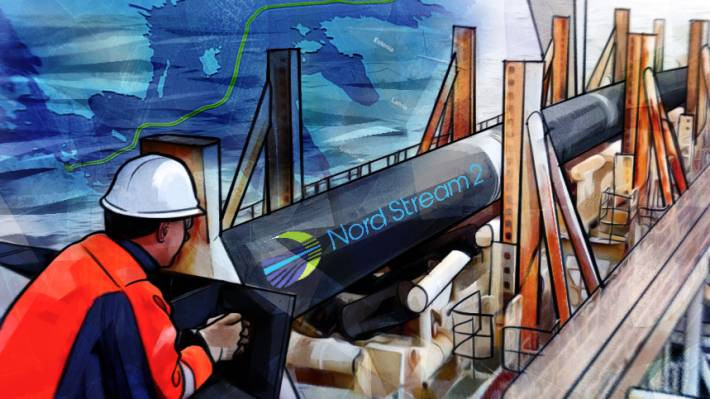
European natural gas storage facilities are currently below 40%. In January 2022, gas consumption in Europe was 1/3 higher than the five-year average.
The weather in European countries is quite mild this year. The average temperatures are almost 2.5 degrees higher compared to last year. However, owners of gas reserves have decided to use them to protect against high prices. Most of the contracts with suppliers use an exchange index "one month ahead." Its strike price is currently at an all-time high. In December, gas was priced at $1,310 per 1,000 cubic meters on the TTF hub, peaking at $2,138. Today, it has become obvious that buying gas in the spot market, where the average prices since the beginning of the month are at $976 per 1,000 cubic meters, is a much better decision.
Natural gas imports to Europe have dropped significantly amid activity of European importing countries. Gazprom's deliveries to the EU fell sharply this month by about 40% and, according to Gas Infrastructure Europe, an association representing the interests of European gas infrastructure operators, now average 233 million cubic meters per day. According to the Russian newspaper Kommersant, the decrease in supplies is due to the fact that European consumers do not order Russian gas.
The rapid growth of gas prices in Europe became one of the reasons for this. In January, actual deliveries are carried out according to contracts concluded in advance, which means that today gas is delivered to Europe at the high prices of December 2021 which is about $1,400 per 1,000 cubic meters. Therefore, the share of Russian natural gas on the European market was forced to decrease in January.
At the same time, imports of natural gas to European countries in January showed a record high increase by 2.7 times compared with last year's figures. In case the situation with Ukraine worsens, the growing prices in Europe may increase the supply of gas from Asia. However, liquified natural gas (LNG) supplies cannot yet replace pipeline-supplied gas. LNG supplies are not able to compensate for the consumption of gas from European storage facilities, which are currently 39% full.
According to Gas Infrastructure Europe, since 2011, the average level of gas reserves at the end of the season is estimated at 36%. The highest level was reached in 2020 at 53.96%, the all-time low was seen in 2018 at 18.56%, but there is every reason to believe that this figure will increase this year. By the way, the heating season will last for two more months - February and March. According to Gazprom CEO Alexey Miller, March has become a full-fledged "winter" month.
The global gas demand in 2022 is expected to slow down by 0.9% after an increase of 4.6%. According to a new International Energy Agency (IEA) report on the gas market, demand in Europe is likely to decline by 4%.
However, in North America, for example, gas demand is expected to increase by 1%, in South and Central America by less than 1%, and in Asia by 5%. A significant reduction in gas demand in Europe will be caused mainly by a decrease in electricity production due to gas combustion. According to the authors of the IEA report, electricity production will decrease by 6% compared to 2021. With warmer weather in Q1 and Q2, demand for heating services also may decrease.





















